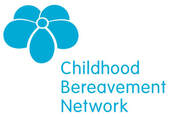Suggested Resources for Classroom Learning
There is no single way to teach about bereavement. You will be best placed to judge the needs of your school community and your pupils. Please find below some suggested resources that may be of use to you when preparing this learning.
Educating young people in how to deal with significant loss, the myriad of grief responses and reactions, strategies for coping with transitions and adapting to change can enhance resilience and promote well-being, particularly in a world where identity can be transient, and change can be rapid. The RE lesson in a Catholic school is often where learning and teaching takes place about death and a faith response to its impact. The liturgical cycle provides a context for sharing, praying and learning about the importance of remembering those who have died, praying for them and the grief of their family and friends.
Alongside Religious Education is the teacher’s role in accompanying the child who is bereft. The teacher can hold a privileged place for s/he can provide the listening ear, the gentle encouragement and give pupils the opportunities to learn the language of loss, to articulate the reality of their experience as well as strategies to assist in the walking through the turbulence and discomfort of grief. Naturally, recognition of our shared faith, practices and rituals are stressed, for the teacher cannot remove the pain of loss, the death event or provide definitive answers to a meaning making process. Rather, the teacher models a faith filled grief response through careful listening, words of compassion and empathy, an offering of, or an invitation to, prayer for the deceased and the mourners, and a mindful watch of the child’s day to day life, work and interactions at school. The cardinal virtues of faith, hope and charity are a useful reminder of a Catholic Christian response to death – we live a life of faith in a loving God who wills us to live with him in eternity, hope that soul of the loved one is “received and presented to God the most High” and our response to those who bereave is one of love and accompaniment.
The Catholic teacher is mindful of the spiritual impact of loss as well as the emotional and psychological. Sometimes the bereft will wrestle with dis/belief in God with a questioning of the loving, merciful and compassionate God who is blamed for the death of a loved one. Sometimes the wrestle is around meaning making – the desire to understand why the loss and resulting pain is experienced alongside a quest for identity and adjustment to life without the loved one. A key feature here is recognition that spiritual struggle is not uncommon for often one is trying to gain, or regain, a sense of identity. This can be manifest in such scenarios as the bereft daughter who wonders ‘who am I now, that I am not a daughter?’ or the brother who struggles with ‘who I am now, that I am not a brother?’ Roles and identity often feature in the struggle to come to terms with a significant loss. The role of the teacher here can include clear articulation of the pupil as a child of God and a cherished member of the school and class. Identity and routine can be enhanced in the school amidst the uncertainties and adjustments in the aftermath of family change and loss.
Mary Lappin
University of Glasgow
Educating young people in how to deal with significant loss, the myriad of grief responses and reactions, strategies for coping with transitions and adapting to change can enhance resilience and promote well-being, particularly in a world where identity can be transient, and change can be rapid. The RE lesson in a Catholic school is often where learning and teaching takes place about death and a faith response to its impact. The liturgical cycle provides a context for sharing, praying and learning about the importance of remembering those who have died, praying for them and the grief of their family and friends.
Alongside Religious Education is the teacher’s role in accompanying the child who is bereft. The teacher can hold a privileged place for s/he can provide the listening ear, the gentle encouragement and give pupils the opportunities to learn the language of loss, to articulate the reality of their experience as well as strategies to assist in the walking through the turbulence and discomfort of grief. Naturally, recognition of our shared faith, practices and rituals are stressed, for the teacher cannot remove the pain of loss, the death event or provide definitive answers to a meaning making process. Rather, the teacher models a faith filled grief response through careful listening, words of compassion and empathy, an offering of, or an invitation to, prayer for the deceased and the mourners, and a mindful watch of the child’s day to day life, work and interactions at school. The cardinal virtues of faith, hope and charity are a useful reminder of a Catholic Christian response to death – we live a life of faith in a loving God who wills us to live with him in eternity, hope that soul of the loved one is “received and presented to God the most High” and our response to those who bereave is one of love and accompaniment.
The Catholic teacher is mindful of the spiritual impact of loss as well as the emotional and psychological. Sometimes the bereft will wrestle with dis/belief in God with a questioning of the loving, merciful and compassionate God who is blamed for the death of a loved one. Sometimes the wrestle is around meaning making – the desire to understand why the loss and resulting pain is experienced alongside a quest for identity and adjustment to life without the loved one. A key feature here is recognition that spiritual struggle is not uncommon for often one is trying to gain, or regain, a sense of identity. This can be manifest in such scenarios as the bereft daughter who wonders ‘who am I now, that I am not a daughter?’ or the brother who struggles with ‘who I am now, that I am not a brother?’ Roles and identity often feature in the struggle to come to terms with a significant loss. The role of the teacher here can include clear articulation of the pupil as a child of God and a cherished member of the school and class. Identity and routine can be enhanced in the school amidst the uncertainties and adjustments in the aftermath of family change and loss.
Mary Lappin
University of Glasgow
|
Winston’s Wish supports bereaved children, young people, their families and the professionals who support them. Clicking here will take you to downloadable classroom resources that could easily be adapted to fit with the Catholic ethos of your school.
|
Downloadable lesson plans produced by the Childhood Bereavement Network can be found here. Though these are for Primary aged children, some resources may be helpful for certain classes and groups in other settings.
|

